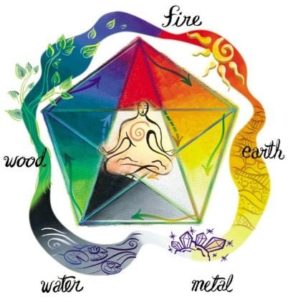Practitioners of the Chinese art of Feng Shui use color to harmonize people with their surrounding environment. The five elements, which include fire, earth, metal, water, and wood, are each represented by a color. These colors are then further associated with emotions. Throughout our many years of working as painters in the Boulder area, we have applied these concepts in our business and many of our clients”™ homes. We believe that many of the underlying color meanings of Feng Shui hold merit, so we have created this helpful guide to choosing the proper colors when painting your home”™s interior.
Know Color Meanings
The first step in choosing meaningful colors is understanding what the colors themselves represent. The following color associations can be made with each of the five elements:
- Fire is associated with red, orange, purple, and strong yellow.
- Earth is associated with light yellow and beige.
- Metal is associated with gray and white.
- Water is associated with blue and black, and finally
- Wood is associated with brown and green.
These elemental correlations are further broken down into the emotions that are evoked by each color. Reds and oranges stand for passion and stimulation. Yellows and neutral colors bring a sense of wisdom, patience, stability and balance. Blue and green hues represent calm, revitalization and new beginnings. It”™s important to keep these relationships in mind when deciding room color.
What Is the Room”™s Purpose?
In most cases, your paint color choice will depend on the room being painted. Choose a color that conveys the personality of the room in question. For example, living rooms are often seen as places of relaxation, but also play a role in entertaining guests. Use calming colors, like blue or beige to create a peaceful ambience. Brighter shades of brown, or even accenting yellows and oranges, can also be used to add an air of energy to the room. For higher energy rooms, such as office spaces, don”™t be afraid to use red to evoke passion and a drive for success. Gray and white also work well here, because they are known to promote mental clarity. Apply these same principles to bedrooms, bathrooms, your dining area, and gym spaces to keep the rest of your home aligned with standard Feng Shui practices.
Add Life Balance
While certain rooms call for certain colors, there are also circumstances where traditional Feng Shui ideals can be disregarded. If you”™re in need of additional drive in the kitchen, choosing brighter reds and oranges can make you feel motivated and energized. Conversely, painting a home office with blue or earth tones can induce calm and a sense of being grounded, which may help you combat work-related stress. This reversal of normal color choices can be used to bring balance to rooms by pairing alternative colors with those traditionally selected in Feng Shui.
It”™s also important to understand that Feng Shui is flexible. Do not choose a color you despise just because it fits a narrative. Remember that this is about living in harmony with your environment, which won”™t be possible if you don”™t care for the colors you have to see every day.
Feng Shui and its teachings are an outstanding resource for anyone who is struggling with paint color selection, but its significance extends far beyond its standard methods of picking colors. The value of Feng Shui comes from its basic teaching of becoming at ease with your environment. Staying true to yourself and styling your home accordingly is just as important as avoiding red paint in a bedroom.
If you”™re in the Boulder area and are looking for a painting service, look no further. With almost 40 years in the business, we”™re experts at helping customers choose colors for their home, and pride ourselves on our high quality work. Give us a call today to schedule your free color consultation.

